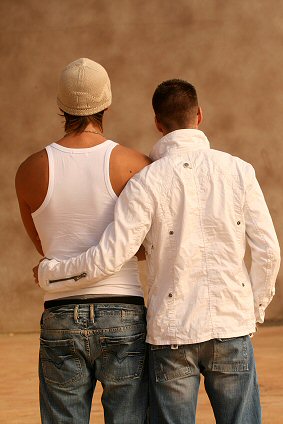 Gay neighborhoods and the clubs, bars and events that comprise them appear to be changing worldwide because of Internet dating and civil rights progress, according to new University of Minnesota research. The findings come from a study published in AIDS Care that asked HIV prevention experts and gay community leaders from 17 cities in 14 different countries about changes in their communities.
Gay neighborhoods and the clubs, bars and events that comprise them appear to be changing worldwide because of Internet dating and civil rights progress, according to new University of Minnesota research. The findings come from a study published in AIDS Care that asked HIV prevention experts and gay community leaders from 17 cities in 14 different countries about changes in their communities. Interestingly, in all cities, the virtual (Internet) gay community was identified as currently larger than the offline physical community. Most cities identified that while the gay population in their cities appeared stable or growing, the physical gay community infrastructure appeared in decline.
"With the exception of London and possibly New York, gay bars and culture are changing. On almost all measures, we're seeing the same trend: decreasing number of gay bars/clubs, decreased attendance at gay events, less volunteerism in gay or HIV/AIDS organizations and, less gay media, resulting in an overall decline in gay visibility," said Simon Rosser, principal investigator on the study. "The biggest reason for these changes, we think, is the Internet. Traditional gay communities have become much quieter now that most gay men are online. It's really a worldwide trend."
The study participants reported several ways that gay communities are transitioning. They cited societal oppression, lack of rights, and the HIV epidemic as the reasons why gay men originally came together as a community in inner cities, which eventually became gay-identified neighborhoods. But now, in cities as diverse as San Francisco, Amsterdam, Denmark, Toronto, Sydney, and Cape Town, these historically gay neighborhoods appear to be disappearing, driven by high real estate prices, young gay people remaining in the suburbs, and greater integration of heterosexuals into inner city areas.
The achievement of civil rights also appears to play a role; young people in cities where they have equal rights may simply not feel the same need for community. Rosser noted that the changes are consistent with theories of social assimilation.
Rosser says that the changes in gay communities are a challenge for HIV/STD prevention. In the past, gay community organizing and HIV/STD prevention for gay men often involved recruitment and education in gay bars and clubs and through gay media. Since many cities' gay bars and media are decreasing, he believes that it's time to reevaluate how to promote HIV prevention. "We have to discover effective ways of doing HIV prevention online and become visible again to the gay community," he concluded.
Related:
The Appropriation Of "Gay"
AIDS Prevention Campaigns Based On Fear Ineffective
Internet Sex-Seeking Risks Quantified
Sexuality Not So Clear-Cut For New York Men
Source: University of Minnesota

